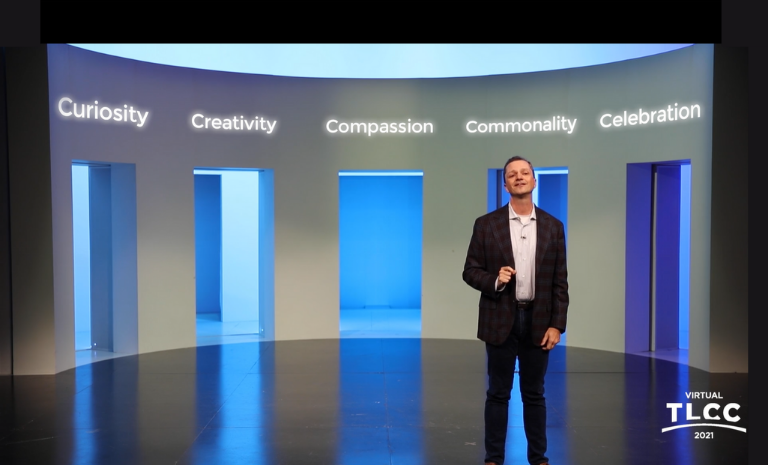Arts and Culture
BI and Analytics
COVID-19
Finance
Article
Insights & Innovation
afd7f938-b65e-459e-bfaf-85629056bfbb
5 min
https://edge.sitecorecloud.io/tessituraneab9a-tessiturane5642-staging-5396/media/Images/Licensee-Photography/Photos_768x465/Houston-Ballet-768x465.png?h=465&iar=0&w=768
How the Houston Ballet tells the story of their data through times of change
The end is the beginning

Associate Director of Ticketing Services, Houston Ballet

Ticketing Services Manager, Houston Ballet
The end is the beginning
8/30/2021
5 min
The saying “Hindsight is 20:20” could not be truer when we think about all that has happened in the pandemic.
The hardships that Houston Ballet has overcome in recent seasons have made us more resilient. We have found ways to navigate those challenges, grow through changes, and fight back to stability.
2017: Hurricane Harvey
Hurricane Harvey made a severe impact on us, but we were determined to continue performances. In a very condensed time, we scouted, booked, and set up new venues. We designed procedures that allowed us to communicate, reschedule, and reseat thousands of patrons for our entire 2017–18 season. Through that turmoil, the strategies and processes that we created provided a better recipe for disaster preparedness — which gave us a good foundation for planning in the pandemic.
When a disaster happens, time moves quickly. We react, make quick decisions, and find solutions to move things forward. It is in these times, we have learned, that it is so important to record where things are and think about what will happen as things change. It is essential to think about how we will tell the story of where things were and how we expect them to be in the future.
It is essential to think about how we will tell the story of where things were and how we expect them to be in the future.
Historical data informs all your plans for the future. At Houston Ballet, we rely on reporting and Analytics dashboards to provide checks and balances as we design a path that will align with our core processes.
Reactive decisions can make it difficult to retrieve data later. This happened, for example, during our season away from our home venue in 2017–2018. The way we reseated people in the new venues kept our subscription renewal process intact; however, it altered our subscription reporting, and we struggled to analyze subscription trends over that period.
Before you begin, make external copies of your data through processes like scheduled reporting. This will allow you to look back on a snapshot of the information before it is changed by reschedules, exchanges, and/or refunds. Your processes should align departments and create a unified understanding of what to expect through the changes. To accomplish that, aim to create historical records and snapshots that anchor with your Finance department and your lead Tessitura user.
While continuity of data and internal process is important, these priorities cannot overshadow the customer experience. As we redesigned our processes in the face of Hurricane Harvey, we carefully considered how each step of the process would impact our customers. Houston Ballet’s customer-centric approach was in the forefront as we made decisions on how to communicate uncertainty and ensured that in our planning, we kept our patrons a top priority.
2020: The coronavirus pandemic
Once again, we are faced with making pivotal decisions for our patrons and our organization.
The pandemic began in the latter half of our 50th anniversary season in 2019–2020. We decided to allow patrons to choose whether to donate, receive a credit, or request refunds for cancelled performances. Because of the high level of choice, the patron care process was high touch so we could capture details about each customer’s decision.
Senior leadership and Finance requested frequent reports on trends of our cancelled programs and funds. Due to the sudden process changes the pandemic required, our custom reports were not able to provide the data we needed. During this time, we relied on a combination of external spreadsheets and Tessitura reports. We were inspired to find ways to reintegrate some of our external efforts back into Tessitura with Analytics once we learned that we could adapt our refund processes to fit both the event cancellation utility and our internal reporting needs.

Artists of Houston Ballet in Trey McIntyre’s Pretty Things. Photo by Amitava Sarkar (2020). Courtesy of Houston Ballet.
Understanding how transactions would be created, affected, and implemented for the movement of funds to our 21–22 season helped inform how we would manage expectations and help patrons understand what was happening with their tickets and held funds. For our organization, that meant using on-account funds to move subscription and season ticket add-on revenue to the next season, while using gift certificates for single ticket cancellations. We encouraged single ticket buyers to use their funds during the current season. This approach allowed us to ensure that the funds that were moving forward would balance with packages and products available throughout the season. It also gave our patrons flexibility and choice in the way that they could apply the funds, and we could clearly report from within Tessitura on how the funds were returned or applied.
Envision the result and work backwards
One of the most powerful lessons we have learned is to take time to envision the long-term result that you want, and then work your way backwards. Every decision or process we made was focused on how it would better our patron experience and our business practices. Here are some tips we’d like to share:
- Aim to create solutions that can integrate into your current practices and that will aid in telling the story of what happened in the absence of the people who created them.
- Analyze, test, and understand your findings not only within Tessitura, but with your staff and colleagues who share the responsibility of storytelling alongside you.
- Organizationally consider the choices being made and how it may affect the workflow of your colleagues. What may be a quick resolution for one department, perhaps with limited staff, could create a backlog for another department or cause issues with the patron experience.
- Document your findings and how your processes were implemented. When you look back to understand the data, make sure that findings can be understood for the years in which they are relative. Note variances and why they are present.
Navigating adversity can develop resilience and spark innovation. Critically thinking though challenges in tumultuous times can help you birth solutions that create stability, paving the way for success in the post-pandemic reality.
Top photo: Houston Ballet Demi Soloist Estheysis Menendez in Stanton Welch’s Divergence. Photo by Amitava Sarkar (2018). Courtesy of Houston Ballet.
Topics
Arts & Culture
/BI & Analytics
/COVID-19
/Finance

Lauren Gayden
Associate Director of Ticketing Services
Houston Ballet

Brittany Restrepo
Ticketing Services Manager
Houston Ballet

Why Arts & Culture is Essential Today
Arts & Culture
Healing the world requires five human traits: arts & culture delivers them all.

A contactless customer journey with a personal touch
Arts & Culture / Business Strategy / Technology / Ticketing & Admissions
How Georgia Aquarium creates a visitor-focused experience